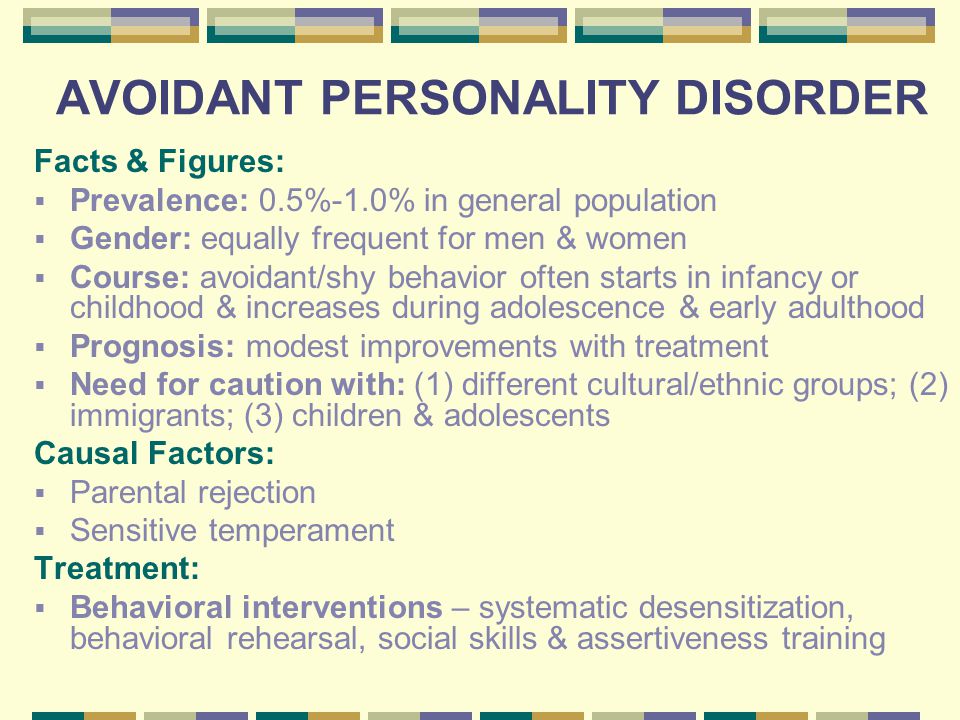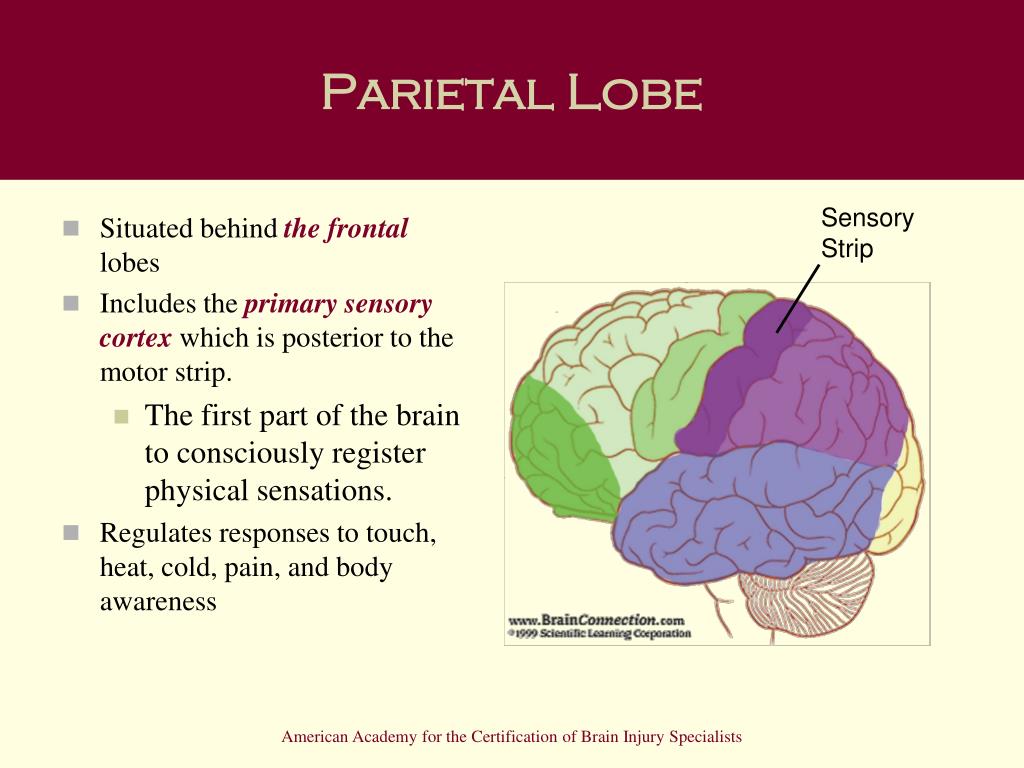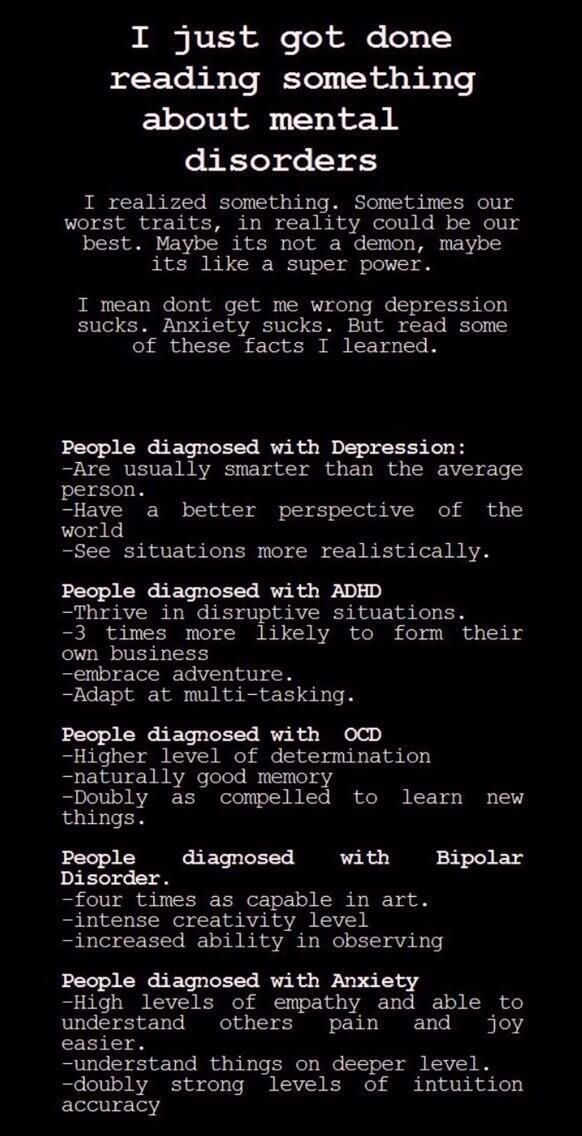How to deal with racing thoughts
7 tips to stop them
We include products we think are useful for our readers. If you buy through links on this page, we may earn a small commission. Here’s our process.
Racing thoughts are thoughts that come quickly, one after the other. They may relate to one subject or many different ones.
When a person has racing thoughts, their mind involuntarily digs up random thoughts and memories and moves rapidly from one to another.
The topics may have nothing to do with each other or may have links to each other. Random thoughts can affect a person’s ability to sleep or to focus on a single topic.
If racing thoughts move in a sequence, they can end in a worst-case scenario. A person may hear them as a voice they cannot ignore or as background noise in the brain.
Treating an underlying health condition or learning some coping strategies may help resolve these thoughts.
There is no single cause of racing thoughts. According to a 2020 article, racing thoughts may be a symptom of bipolar disorder, especially during a manic phase.
However, according to a 2019 article, various other factors can trigger racing thoughts. These include:
- anxiety
- depression
- panic disorders
- chronic stress
- the use of recreational drugs, such as amphetamine or cocaine
- some prescription drugs, such as dexamethasone
- medical conditions, such as stroke, multiple sclerosis, and Cushing’s disease
- a traumatic brain injury
Other conditions that may lead to racing thoughts include:
- obsessive-compulsive disorder (OCD)
- post-traumatic stress disorder (PTSD)
- attention deficit hyperactivity disorder (ADHD)
One older study suggests that when a person with depression experiences racing thoughts, they may be at a higher risk of thinking about suicide.
According to Mental Health America, racing thoughts may also signal the start of psychosis.
There are a variety of ways to control racing thoughts and reduce their occurrence.
1. Focus on now, not the future or the past
For some people, racing thoughts stem from something that has not happened and may never happen. Others focus on things that happened in the past, which they cannot change.
People who experience racing thoughts should try to focus on what is happening now. Saying to themselves, “I won’t worry about the past or the future, I’ll focus on what I can control,” is a good place to start.
2. Take deep breaths
The body’s natural panic response is to speed up the heart and breathing rate. This may happen when the mind begins racing.
MHA suggest that taking slow, deep breaths can reduce the body’s stress response and promote a feeling of calm, helping to quiet or stop racing thoughts.
The following strategy might help. Try:
- breathing in slowly while counting to five
- holding the breath for a few seconds
- breathing out while counting to five
A person can practice deep breathing anytime, without any specialized training.
3. Think about other options
Racing thoughts often end up in a worst-case scenario, and it can be easy for someone to build up a sense of disaster.
This can lead to a vicious cycle of more anxiety and continued racing thoughts.
A person can try to counter this by:
- repeating to themselves that this worst-case scenario is not going to happen
- considering how likely it is that the worst-case will happen
- thinking about more desirable alternatives that could occur
Instead of, “I’ll get fired for that mistake,” change the thought to, “Everyone makes mistakes, and I’ll do what I can to make it right.”
4. Use mantras
According to an older article in the International Journal of Behavioral Consultation and Therapy, mantras, or positive self-statements, are simple words or phrases that a person can repeat to calm their mind. Some people find them useful in times of panic and racing thoughts.
Repeating phrases such as, “I can get through this,” or “It will be okay,” might help.
Mantras allow the mind to focus on one simple positive or encouraging thought. This turns the mind away from its racing thoughts.
5. Try distractions
MHA also indicate that distractions, such as a favorite hobby, such as a favorite hobby, especially a calming one, can quiet the mind and help a person focus on something other than racing thoughts.
Depending on a person’s preferences, options for reducing stress and finding distraction may include:
- using coloring books
- painting
- gardening
- cooking
- singing or playing an instrument
- going for a walk or other outdoor activity
- watch a movie or listen to some music
6. Exercise
Regular physical activity improves mental well-being and might be helpful during an episode of racing thoughts.
One 2016 study found that exercise improved symptoms of depression, while another found that just 15 minutes of exercise improved mood in college students.
Current guidelines from the Centers for Disease Control and Prevention (CDC) recommend 150 minutes of moderate-intensity exercise per week for adults. The CDC also recommend muscle-strengthening exercises twice a week.
If racing thoughts start developing, walking, jogging, or similar activities may help settle the mind.
7. Inhale lavender essential oil
Lavender has a reputation for being calming, and some research supports this claim.
Some evidence suggests that inhaling lavender essential oil can calm the mind and quiet brain activity.
Lavender oil is available for purchase online.
Do not apply the oil to the skin without first diluting it with a carrier oil, such as almond or olive oil.
Although research suggests that essential oils may have some health benefits, it is important to remember that the Food and Drug Administration (FDA) does not monitor or regulate the purity or quality of these. A person should talk with a healthcare professional before using essential oils, and they should be sure to research the quality of a brand’s products. A person should always do a patch test before trying a new essential oil.
A person should always do a patch test before trying a new essential oil.
Many mental health conditions can cause racing thoughts, and it is essential to seek a doctor’s advice for diagnosis and treatment.
A doctor may use a questionnaire to assess the type of thoughts a person has and why they are happening.
A person should speak to a doctor if they experience:
- repeated episodes of racing thoughts
- a low mood and symptoms of depression lasting more than 2 weeks
- sleep problems
- symptoms of anxiety, ADHD, or other mental health issues
There is no single treatment for racing thoughts, but some options include:
- medication, psychotherapy, and other treatments for mood disorders and other mental health conditions
- reviewing medications that may trigger racing thoughts
A person may experience racing thoughts in response to a traumatic event, but they can also indicate an underlying health condition.
Many of the conditions that cause racing thoughts require professional guidance from a doctor or mental health practitioner for ongoing management.
A person should see a doctor if they experience racing thoughts without an apparent reason or have any other symptoms that last longer than 2 weeks.
These symptoms may indicate an underlying mental health problem that needs medical attention.
Racing Thoughts: Tips for Coping
Overview
Racing thoughts are fast moving and often repetitive thought patterns that can be overwhelming. They may focus on a single topic, or they may represent multiple different lines of thought. You may have racing thoughts about a financial issue or about an embarrassing moment or a phobia. These thoughts may also escalate.
Racing thoughts can increase your anxiety or feelings of unease and can disrupt your concentration.
When you have racing thoughts, you may feel like:
- Your mind is going a mile a minute.

- You aren’t able to slow down your thoughts.
- Your mind isn’t able to “shut off,” and you can’t fully relax.
- It’s difficult to focus on anything else.
- You keep thinking about a problem that has been blown out of proportion.
- You start catastrophizing, or thinking of worst-case scenarios.
Racing thoughts can result in insomnia. This happens when you struggle to fall asleep because you can’t slow down your thoughts at night. Keep reading to learn about strategies to help you calm your mind, longer-term treatment options, and what may be causing your racing thoughts.
Here are several steps you can take to manage or prevent racing thoughts if you’re having them right now:
1. Focus on breathing
Take several deep, careful breaths and focus on counting while inhaling and exhaling. This can force your mind to focus on something other than the racing thoughts. It can also have a calming effect on your central nervous system, which can reduce anxiety.
Keep reading: 5 easy ways to ease your mind »
2. Try a mantra
You can use a mantra, repeated when necessary, to take your mind off the racing thoughts. Even one like “Everything will be fine” can be very effective.
3. Eliminate stress before bed
If your racing thoughts typically occur at night when you’re trying to sleep, make changes to your routine before bed so that you can relax and sleep peacefully. Try to eliminate stress for at least two hours before sleep. You can meditate or practice gentle yoga, and read a relaxing book or take a bubble bath. Avoid all electronic screens and overly stimulating mental activity in those two hours before bed.
Longer term, therapy can help identify the cause of your racing thoughts. Cognitive behavioral therapy (CBT) may be particularly helpful. It can teach you coping mechanisms and techniques to manage these thoughts.
These techniques may include:
- doing deep-breathing exercises
- writing out thoughts on paper or in a diary
- using mantras to calm your mind down
- focusing only on the present and things you can control right now
Your doctor may also recommend medications to help manage any underlying conditions, especially if racing thoughts seem to accompany triggers like anxiety attacks or bipolar episodes. These medications may include:
These medications may include:
- antidepressants
- antianxiety medications
- antipsychotics
- mood stabilizers
Racing thoughts are a possible symptom of a number of different conditions. While it’s most common in anxiety, there are other conditions that can cause racing thoughts, too.
Anxiety
Anxiety is a common cause of racing thoughts. While racing thoughts are extremely common during an anxiety attack, they can also occur at any time. They may also precede or follow an anxiety attack.
Keep reading: The best anxiety apps of the year »
ADHD
Attention deficit hyperactivity disorder (ADHD) is characterized by a pattern of inattention or hyperactivity. Some people will describe their inattention as racing thoughts, especially when they are overwhelmed with external stimuli. More common in ADHD is wandering thoughts, where you struggle to focus on a single train of thought.
Learn more: What’s the difference between ADHD and ADD? »
Obsessive compulsive disorder
Obsessive compulsive disorder (OCD) is a mental health condition in which you experience obsessions or compulsions that are difficult to shake. These obsessions can take the form of racing thoughts, where you can’t stop what feels like an avalanche of thoughts on a particular subject. You may have a compulsion that soothes the thoughts, like washing your hands a certain number of times to stop racing thoughts caused by worrying about germs.
These obsessions can take the form of racing thoughts, where you can’t stop what feels like an avalanche of thoughts on a particular subject. You may have a compulsion that soothes the thoughts, like washing your hands a certain number of times to stop racing thoughts caused by worrying about germs.
Bipolar disorder
Bipolar disorder is an emotional disorder in which your emotions skyrocket to extreme emotional highs (manias) and plummet to severe depression. Racing thoughts most often occur during the mania part of a bipolar episode, though they can occur with depression, especially in cases of agitated depression.
Agitated depression
Agitated depression is an outdated term which refers to a severe subtype of depression. It’s characterized by feeling agitated instead of lethargic, the symptom that’s commonly associated with most types of depression. You may also feel restless, angry, and quick to react. Racing thoughts is more likely to affect those with agitated depression than other types of depression.
Medication side effect
Sometimes, medications may treat some symptoms of a condition but exacerbate or even cause others. Medications used to treat depression, anxiety, or bipolar disorder can sometimes cause agitated depression, which can then trigger racing thoughts.
If you start a new medication and start experiencing racing thoughts, call your doctor so you can try a new medication or adjust the dosage as soon as possible.
Learn more about depression medications and their side effects »
You should call your doctor or make an appointment with your therapist if you’re having racing thoughts on a regular basis and they’ve become disruptive or are preventing you from sleeping. You should make an appointment with a therapist as soon as possible to be evaluated for a mood or mental health disorder if you experience racing thoughts alongside any of the following:
- symptoms of depression
- strong irritability
- strong compulsions
- anxiety or panic attacks
- severe shifts in mood
Read more: 11 ways to stop a panic attack »
Only once you’re diagnosed can treatment start. Just like other types of health conditions, mental health conditions are more easily treated when caught early.
Just like other types of health conditions, mental health conditions are more easily treated when caught early.
Bad thoughts: how to stop them
Anxiety is an adaptive mechanism. It allows us to adapt to different life circumstances.
Website editor
Tags:
VOICE Psychology
What to do, if
anxiety
Getty images
The feeling of anxiety is an adaptive mechanism. It allows us to adapt to different life circumstances. Psychologist Elena Uspenskaya believes that when anxiety causes insomnia and uncontrollable fear, it must be dealt with.
Usually such bad thoughts arise as a reaction to a specific event, during a public speech or communication with strangers. For example, you have an important presentation scheduled. Naturally, you start to worry, thoughts are spinning in your head: “My voice will tremble”, “I will mix up the paragraphs”, “My report will seem stupid and uninteresting to them, but I look ridiculous.” And, as if by magic, your hands really begin to tremble and your voice disappears.
Naturally, you start to worry, thoughts are spinning in your head: “My voice will tremble”, “I will mix up the paragraphs”, “My report will seem stupid and uninteresting to them, but I look ridiculous.” And, as if by magic, your hands really begin to tremble and your voice disappears.
You get confused in words and become silent. Presentation on the verge of failure.
Situational thoughts are temporary and prevent us from solving a specific problem. Therefore, it is easier to deal with them than with other types of disturbing thoughts.
Detach from emotions
In a difficult situation, a process called “dissociation” is launched in the psyche. It works quite often, but at the same time remains unconscious.
The principle of action is very simple: when you find yourself in a stressful situation (deadline, conflict), panic is suddenly replaced by calmness. You feel how you move away from what is happening and as if you are looking at everything from the side. An unexpected lull allows you to make the only right decision.
You feel how you move away from what is happening and as if you are looking at everything from the side. An unexpected lull allows you to make the only right decision.
We may well activate this effective defense mechanism consciously. To do this, it is enough during a speech to shift attention from your own experiences to the behavior and appearance of colleagues or other speakers. Having thus freed yourself from interfering emotions, you begin to think clearly, soberly and constructively. The dissociation technique is indispensable in resolving complex conflict situations, when it is important to keep a "cold head".
View from a different angle
There is a technique in Neuro Linguistic Programming that allows you to find a new vision of a problem by changing its context and, accordingly, its perception. It is called "reframing", which is translated from English as "insert into a new frame."
For example, you are late for work, and you have a very strict manager who meets all subordinates at the elevator, defiantly looking at his watch. You are afraid of the prospect of starting the morning with a severe reprimand. To get rid of fear, imagine a photograph of the boss with the most severe expression on his face. Now put it in a white frame. Describe how you feel about the situation depicted? And what if you make the frame orange and put running lights around the edges? Mentally go through several options and feel how your feelings change. Most likely, the portrait of a strict leader will seem funny to you in a frame with pink hearts, rhinestones and feathers. The exercise will help to change the direction of disturbing thoughts and finally put a broken record on "pause".
You are afraid of the prospect of starting the morning with a severe reprimand. To get rid of fear, imagine a photograph of the boss with the most severe expression on his face. Now put it in a white frame. Describe how you feel about the situation depicted? And what if you make the frame orange and put running lights around the edges? Mentally go through several options and feel how your feelings change. Most likely, the portrait of a strict leader will seem funny to you in a frame with pink hearts, rhinestones and feathers. The exercise will help to change the direction of disturbing thoughts and finally put a broken record on "pause".
Remember why you are here
Much of the bad thinking comes from worrying about how others will judge you. Even at a doctor’s appointment, you think what impression you make on him, whether he will condemn you. And so you lie to present yourself in a more advantageous light. However, it is very important for a doctor to get reliable information from you, otherwise he will not be able to make a correct diagnosis. Maybe that's why, tired of the lies of his patients, Dr. House from the popular series resorts to non-standard methods of searching for the truth (breaks into the patient's apartment, persuades him to undergo diagnostics dangerous to health).
Maybe that's why, tired of the lies of his patients, Dr. House from the popular series resorts to non-standard methods of searching for the truth (breaks into the patient's apartment, persuades him to undergo diagnostics dangerous to health).
Trust me, your doctor won't judge you for not eating right or smoking too much. He just wants the facts. Ask yourself why you are in this place. Correct Answer: To heal. As soon as you remember the main purpose of the visit, alarm will recede.
Thinking in images
Uncontrollable anxiety can be stopped with the help of imagination. Close your eyes and imagine that you are taking a broom and sweeping all doubts out of your head. Or you write a list of painful thoughts on the board and wipe it off with a rag. Another good trick is to “fill” the head with a viscous liquid like oil, in which thoughts sink without rising. You can imagine that anxiety is autumn leaves: here they are floating on the water, here they are being whirled by the wind. Do not delay any, do not try to answer the questions that arise, do not show emotions - just contemplate. Evil thoughts will float by.
Do not delay any, do not try to answer the questions that arise, do not show emotions - just contemplate. Evil thoughts will float by.
Obsessive fantasies
Recently, there was a joke on the Internet: “What do your parents think when your phone is turned off? You are dying - 49%, you have already died - 49%, your battery has run out - 2%.
A clear example that if people lack information, they present the most tragic scenario. Most often, such thoughts are based on internal fears, fears, anxieties.
Unlike situational fantasies, obsessive fantasies have a more intense negative charge and no longer affect a specific situation, but an entire area of life: for example, relationships with relatives and friends. This type of bad thought is much more difficult to deal with, but still possible.
Here and now
A characteristic feature of fantasies is that they have nothing to do with real facts. We seem to find ourselves in a strange, fictional world. For example, you are worried that you will forget to bring the necessary certificate for obtaining a visa, you will lose your passport... You immediately imagine that you will have to reissue documents, you will not have time to get permission to enter the country, you will not be able to have a good vacation, after two weeks you will go to work tired and dissatisfied. Imagination obligingly offers you pictures, one more terrible than the other.
We seem to find ourselves in a strange, fictional world. For example, you are worried that you will forget to bring the necessary certificate for obtaining a visa, you will lose your passport... You immediately imagine that you will have to reissue documents, you will not have time to get permission to enter the country, you will not be able to have a good vacation, after two weeks you will go to work tired and dissatisfied. Imagination obligingly offers you pictures, one more terrible than the other.
To get back to reality, do an exercise that will help you feel your body and become aware of the here and now situation. Say: “I am sitting in a comfortable home armchair, the room is warm, I am dressed in comfortable clothes. All the documents for the visa are in that blue folder, I checked them several times. I am planning a vacation in Europe. This is reality. Everything else is fantasy, there is no reason for alarm.”
Find the truth
The biggest mistake you can make is to ignore negative thoughts.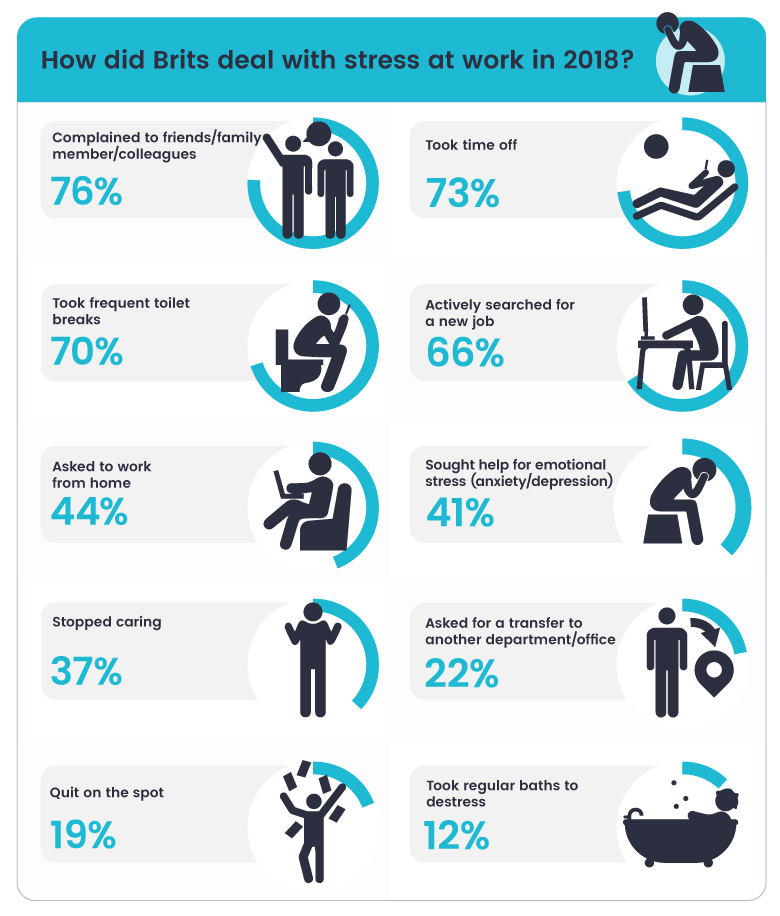 After all, they are only signals of deeper psychological processes. They should be treated the way they treat symptoms, for example, of a cold: describe, investigate, understand the cause of the occurrence. A bad thought is like the tip of an iceberg. And in the depths, under water, fear can be hidden, a hidden desire for something.
After all, they are only signals of deeper psychological processes. They should be treated the way they treat symptoms, for example, of a cold: describe, investigate, understand the cause of the occurrence. A bad thought is like the tip of an iceberg. And in the depths, under water, fear can be hidden, a hidden desire for something.
Find the meaning of the most frequently disturbing symptoms. Think about the message they contain. If you start to worry every time you can't get through to your loved one, ask yourself a few questions. Is everything good in our relationship? Do I feel happy? Are you confident in your partner? For example, behind the fear of losing a loved one, you may be hiding your insecurity, the feeling that there are girls that are better, sexier than you.
Or perhaps your anxiety arises from hidden conflicts in a couple that remain unresolved for a long time. Hence, there is a desire to control a partner, there is anxiety every time he does not answer the call. Instead of driving yourself into a corner with terrible thoughts, talk to your loved one, confess your feelings to him.
Instead of driving yourself into a corner with terrible thoughts, talk to your loved one, confess your feelings to him.
Get distracted
In situations that provoke anxious thoughts, use a technique that allows you not to think about the bad. For example, mom is going on a trip, and you are worried that she might be deceived, robbed. After all, she is so simple and naive! To switch your attention, do a simple exercise: copy a sentence from the first book that comes across with your left hand (if you are left-handed, with your right hand), while pronouncing each word aloud.
If you have successfully completed the task, proceed to the next phrase. Write like this for 10-15 minutes, and then stop and check if the thought that tormented you has disappeared. The brain, busy with the performance of an unusual (and therefore difficult) task, cannot produce any thoughts at all. Over time, exercises will not be needed - you will learn to switch automatically.
Total negativity
This is a group of disturbing thoughts that most intensively affect our lives. First of all, personal. They capture completely and for a long time, generalizing a negative idea of themselves and the world around them.
Thoughts like “I am a failure”, “I will always be alone”, “Life is hard and joyless” can be a signal that you are depressed. If this is the case, we recommend that you contact a psychologist who will help you regain a taste for life. The techniques we have proposed, most likely, will not solve the problem, but will help to realize that it exists.
Refute
Admit it, there are few things in the world that cannot be questioned. Once people were convinced that the Earth is flat and rests on three turtles. Most likely, your ideas about yourself can be refuted.
Write down the tormenting thoughts-generalizations on a piece of paper, try to find counterarguments for them.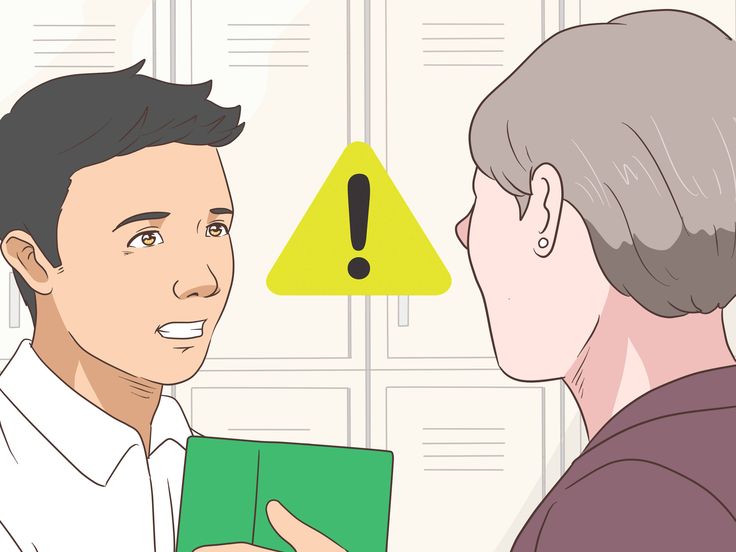 This will help you reconsider your position and go beyond prejudice. For example, if you consider yourself unlucky, formulate the questions: “What is luck? What are its criteria? Even if you can’t find a suitable job for a long time, is it reasonable to get depressed and think that you will never be offered an interesting job? The total belief "I'm a loser" can turn into "Yes, I'm really unlucky right now." And from here a new wording will appear: “There are areas in which I am successful.”
This will help you reconsider your position and go beyond prejudice. For example, if you consider yourself unlucky, formulate the questions: “What is luck? What are its criteria? Even if you can’t find a suitable job for a long time, is it reasonable to get depressed and think that you will never be offered an interesting job? The total belief "I'm a loser" can turn into "Yes, I'm really unlucky right now." And from here a new wording will appear: “There are areas in which I am successful.”
By answering these questions, you will create new judgments about yourself that will no longer be so categorical.
Explore the source of negativity
In most cases, erroneous ideas about yourself are laid in childhood. Once upon a time, they helped to find a common language with parents. For example, my mother said: “You are bad, I don’t love you.” And you tried to earn love by behaving well.
So used to this strategy of behavior that, as an adult, you continue to adhere to it. However, it limits, because each person, depending on the circumstances, can choose different roles. You only show one side of your character. And when people around her don’t accept it, you immediately conclude: “I’m not good enough, I’m bad.”
However, it limits, because each person, depending on the circumstances, can choose different roles. You only show one side of your character. And when people around her don’t accept it, you immediately conclude: “I’m not good enough, I’m bad.”
Try to understand what your false self-image is based on. As soon as you realize at what moment it arose for the first time, many perspectives immediately open before you. You are a versatile person and have the right to show others your “real self”, and not just a fictional “ideal” person that is convenient for others.
Get rid of hidden benefits
Sometimes we can't get rid of negative attitudes because they give certain bonuses. Paradoxically, a person who believes that he is fat or stupid gets the opportunity to feel sorry for himself, blackmail loved ones, causing them a sense of guilt (you are fine!) in order to get more attention. It’s hard to admit it, but such a position allows you to do nothing, go with the flow and remain unhappy.
For example, you are sure that a young man will not like you until you lose weight. You go on a diet, but periodically you “break down”, get upset because of failure and “seize” stress. This is because you intuitively strive to remain the same. Yes, you will be alone. But I'm already used to it. And if a man does appear and you don’t have a relationship (for reasons that have nothing to do with waist size), it will be much more painful.
In this way, the subconscious mind seeks to protect you from more stress. There is only one way out - to find the strength in yourself to admit the reason why you do not want to change. Only then will you be able to start a more complex, but conscious and interesting life.
Photo East News (1)
7 ways to deal with bad thoughts
Unpleasant thoughts are sometimes worse than the events that caused them - it is extremely difficult to get rid of them. Some people spend several hours a day on them! What can be opposed to bad thoughts?
Some people spend several hours a day on them! What can be opposed to bad thoughts?
It turns out that there are a number of methods that will help block the appearance of bad thoughts or cope with them if they have already come. Most of these methods are offered by the American psychologist Danielle Wegner, who has devoted decades of her life to the problem.
1. SWITCH
Don't try not to think of a white monkey - think of a black one. Or better yet, a purple flamingo. Try to switch your mind to some other subject that you also like to think about very much, but which at the same time has positive connotations. Get yourself a few “continued” thoughts that raise more and more questions and the need for answers to them - which means they are drawn into a completely different stream of thoughts. Is it true that Brad Pitt has silicone muscles? I read about it somewhere. But if so, how does he use them? After all, silicone is not able to contract like real muscles - or is there some way to make it do this? And there is also a conspiracy theory according to which our Earth is really flat, and only a cabal of evil scientists has been convincing us for several centuries that it is spherical.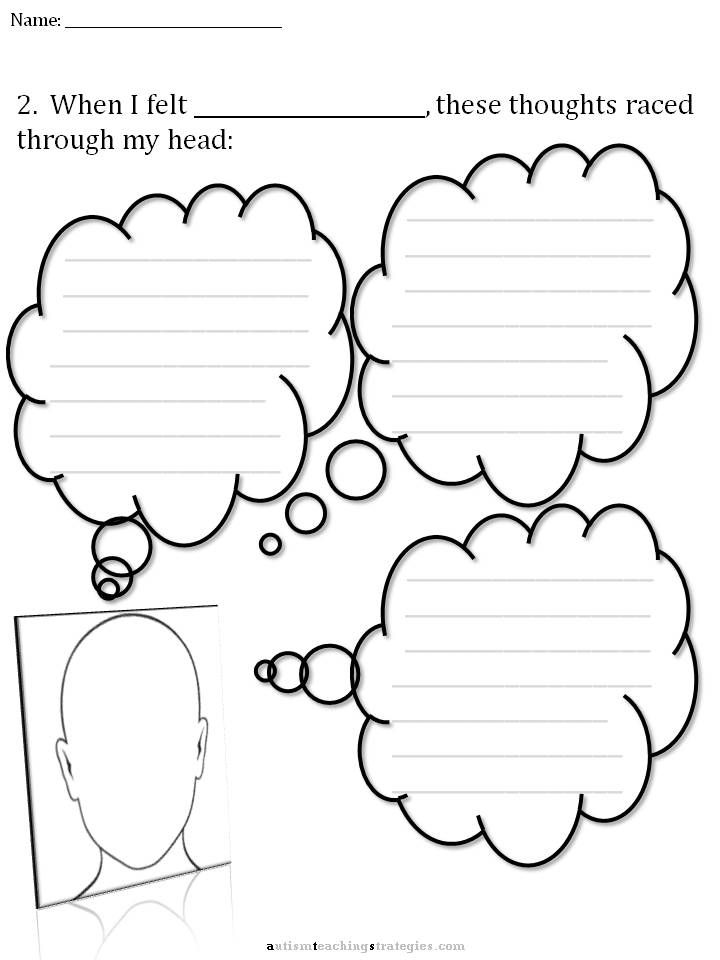 Wait, what about satellite images and records from space? And they are falsified by the same scientists. But what about the poles? There is only one pole - the North one, it is in the center of the Earth, which is flat as a disk, and along the edges of the disk there are glaciers that scientists pass off as Antarctica. And so on - soon the seething stream of this nonsense will take you in a completely new direction.
Wait, what about satellite images and records from space? And they are falsified by the same scientists. But what about the poles? There is only one pole - the North one, it is in the center of the Earth, which is flat as a disk, and along the edges of the disk there are glaciers that scientists pass off as Antarctica. And so on - soon the seething stream of this nonsense will take you in a completely new direction.
2. AVOID STRESS
Some people find that a strong impression, such as a scandal with their neighbors or a naked run through a winter city at night, will help them cope with intrusive thoughts. However, studies show that the more you shake up your emotions, the weaker it is before the “alien invasion” of uninvited thoughts. On the contrary, try to calm down and rest - the more strength you have and the better your brain is, the more chances you have to repel an attack.
3. STOP BAD THOUGHTS
Deal with the obsessive thought - you will definitely pay attention to it, but only later.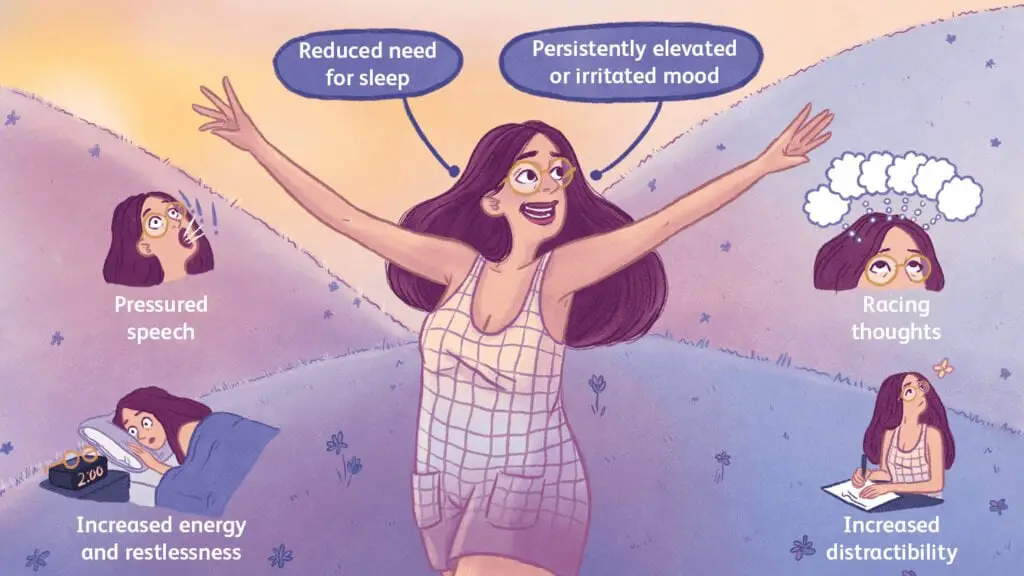 Include in your daily schedule "half an hour for painful thoughts" - but not before bedtime, but, for example, at the height of the working day. Thinking about what is bothering you during your lunch break will quickly take your mind off your problems and plunge back into work. Sooner or later, the subconscious mind will get used to the fact that obsessive thoughts have their own time with strictly defined limits, and will stop pestering you at other hours. Now you can think about how to exterminate annoying thoughts at this time.
Include in your daily schedule "half an hour for painful thoughts" - but not before bedtime, but, for example, at the height of the working day. Thinking about what is bothering you during your lunch break will quickly take your mind off your problems and plunge back into work. Sooner or later, the subconscious mind will get used to the fact that obsessive thoughts have their own time with strictly defined limits, and will stop pestering you at other hours. Now you can think about how to exterminate annoying thoughts at this time.
4. FOCUS ON THE OBSESSION
Once upon a time, a patient came to the great physician Abu Ali ibn Sina, who complained that his eyelid was twitching. Ibn Sina prescribed him an extremely dubious remedy: every hour to begin to blink on purpose with an obstinate eyelid. The patient chuckled, but promised to strictly follow the prescribed. A few days later he came to thank the doctor. Like the remedy prescribed by Ibn Sina, this method works on the principle of "on the contrary": when an obsessive thought comes to you, try to force yourself to think it over from all sides, turn it this way and that, make yourself afraid that it will slip away from you - and you will soon feel that her grip is weakening and she herself would be glad to escape from you.
5. RECOGNIZE THE INEVITABILITY OF A BAD THOUGHT
Another way, somewhat similar to the previous one, is to replace the fear of the appearance of an unkillable thought with complete indifference to it. Learn to think of it as something external: for example, if it is the thought that a loved one left you, get used to the idea that this thought has nothing to do with him (or her), but exists on its own: here now I will go to bed, and my number one Thought will come to me again. Accustom yourself to the fact that this thought does not develop and does not tell you anything new - it just comes and goes, as twelve o'clock at night or winter come and go. And very soon you will feel that she is really leaving *.
6. MEDITATE
Meditation is a great way to organize your mind, bringing your thoughts under control. Practice it daily, trying to achieve a state of complete thoughtlessness. It is not easy, but if you learn how to do it, you will be able to induce this state at will, including it at the time of the day when you are most prone to bad thoughts, or in the situation when you become most defenseless against them.



